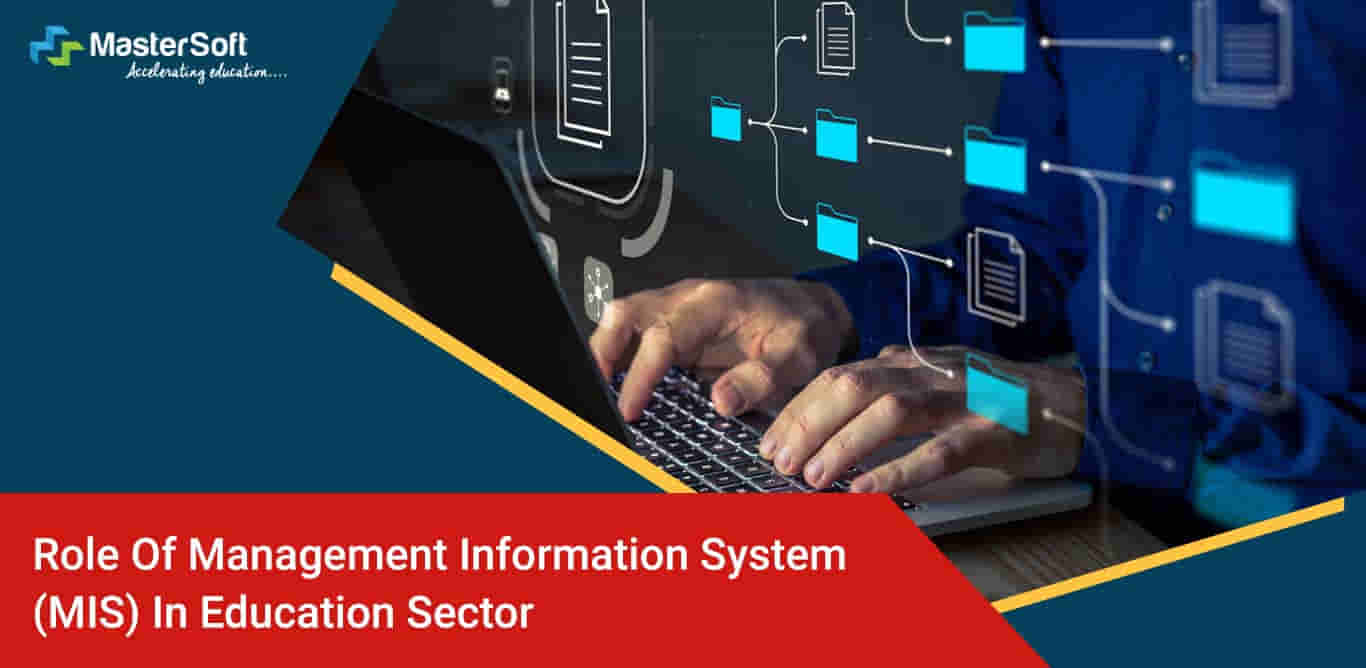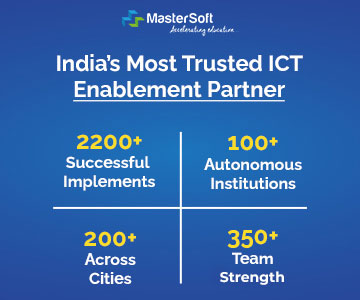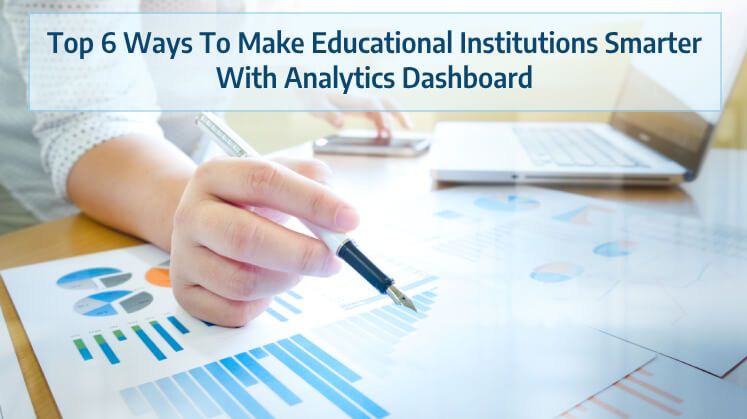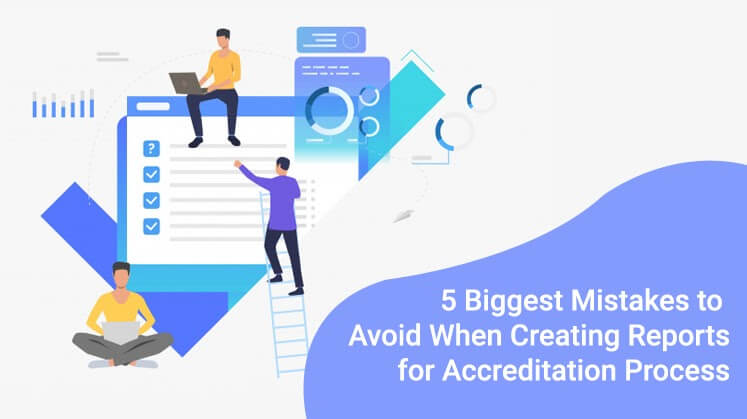
Updated On | 17, Nov 2021
“Data” is the lifeline of every educational institution.
Right from the student turnover rate to the financial records, every piece of data that is/was ever associated with the college paves way for its development. The bigger the institution, the greater the volume of institutional data, which makes it challenging to manage on paper or even with excel files.
Government Compliance & Accreditation bodies, encourage the management of highly accurate data, in structured & easily accessible formats. It empowers transparency across activities & processes.
Most of the higher education & K12 institutions are looking for an optimum distribution of resources and services to yield maximum benefits to students, teachers, and the management alike.
In this world of ballooning educational demands, the right Management Information System (MIS System) can help institutions to propel their progress in the right direction.
Why MIS Reports Are Important For Educational Institutions?
What Is the Education Management Information System (EMIS)?
The term “MIS” itself is self-explanatory.
A Management Information System or MIS is a central data repository capable of not only gathering, organizing, and storing student data but also processing and analyzing it and generating various reports from it. This is MIS in a broader sense.
Education Management Information System (EMIS) is a system that monitors the performance of education programs offered by the institute and manages the distribution and allocation of educational resources.
It manages, plans, and strategize to implement work processes to execute the education system smoothly. Of course, in the field of education, education MIS has specific roles to help an educational institution grow.
Initially, the primary purpose and use of management information systems (MIS) were to make school office activities more efficient. MIS provides administrators and teachers with the information they need for effective planning, policy development, and evaluation.
Nowadays many higher education institutions are looking forward to implementing comprehensive education management solutions to align academic processes and deliver a better student experience.
How Does an Education Management Information System Work?
- An education management information system creates a repository of all the student data that is collected regularly and keeps them safe.
- The data is collected and stored in such a way that it can be easily searched and retrieved using a few keywords even after years.
- The software generates reports from the accumulated data which can be analyzed for making data-driven decisions by the stakeholders
- The system makes use of AI technology for data learning and helps to improve the operations and functioning of the software
- The system helps the institute to conduct exams, admissions, and fees management by offering restricted access to various individuals
- Further, the software helps in academic management for students. It enables conducting classes, uploading notes, downloading assessments, and giving important updates
How to Choose the Right MIS? What Results to Expect from an MIS?
Administrative decisions are largely governed by data insights, which suggest student behavior. Manually interlinking this data & finding the various relationships is impossible.
However, with Powerful BI Tools, these relationships can be tracked & managed!
Software is built on the understanding of the requirements & consequently the goals it aims to serve. Similarly, an MIS built after a detailed Market Analysis, incorporating the timely needs of various institutions & accompanying features could help the organization’s administration get a global insight.
Thus giving a new perspective that could further accelerate growth & student success.
A school management information system (SMIS), provides the necessary information required to manage a school or institution effectively. It provides provision for recording and collecting information and also manages the school's strategic goals and direction.
The student software also manages student and staff academic activities, finance & other important administrative information.
Choose a school information management system, which has served a multitude of educational institutions, incorporating the best features from all!
Benefits of Education Management Information System in modern educational institutes
Easy Report Generation- The system automatically generates a report in all the required formats
Integration with other Software- Integrate the software with other systems for smooth workflow and operations
High Storage- The software can store unlimited data of students and offer high scalability
Restricted Login Access- The system gives restricted access to students, teachers, and admin as per their roles
AI-Based Analysis- The system makes use of AI technology for data analysis and report generation
Online Attendance Management- Institute can manage student attendance online using a biometric system and save time
How MIS Helps in Students Information Management?
Students are at the heart of an educational institution.
Student behavior can be largely tracked through the EMIS. EMIS stores crucial student data such as personal data, exam records, and even hostel and library details.
Additionally, it keeps track of the day-to-day progress of students. For Instance, the system can suggest the regions that attract the majority of students, the gender ratio, mode of registration (social media/website) which could help the institution further optimize online admission campaigns.
These insights can be eventually used to analyze and monitor the improvements or retrogression in the students over time.
This is a comprehensive approach as compared to the legacy database where the stored data was incapable of providing real-time crucial insights and consequently aiding the institution in better and timely decision-making.
To give a practical example of MIS success, let us consider the MasterSoft MIS, one of the most reputed ERP service providers in India.
In India, many colleges have implemented an online attendance management system MIS, MasterSoft. It provides a parent login where parents can view student attendance & track their performance which has helped them in increasing the attendance percentage of students.
Colleges affirm that the MIS system is user-friendly and readily accessible, which has also aided them in improving productivity by deploying workflow-based systems.
How Does MIS Aid in the Management of Academics?
The same goes for data pertaining to the educators as well.
In a developing education institution, the progress of its educators is equally imperative as the institution itself. Educators could get a detailed analysis of student academics, their weak areas which promote personalized learning & data-driven insights to improve student academic outcomes.
Administration can further compare year-on-year student performances, and change the delivery style and map the consequent outcomes.
Educators need to deploy technology to gain in-depth knowledge about student behavior such as Outcome Based Education and make the most out of the time and resources available to provide maximum aid to the students.
Learning Management system, a part of education MIS can further aid to reduce workload & streamlining the classroom activities by streamlining lesson delivery and digitizing student assignments & assessments.
Online Assessments in a proctored environment mapped with Bloom’s Taxonomy & Course Outcomes are a detailed approach towards student learning outcomes mapping & can increase student success significantly.
An MIS integrated into higher education ERP helps track faculty data such as attendance, and performance. But, more importantly, an MIS reduces the workload on teachers by providing quick access to data on any student or a group of students which can be drilled-down, filtered, and arranged accordingly within a few clicks.
MIS - A Boon for the Higher Management Authorities
The ease of tracking and analyzing resource distribution and expenditures is one of the biggest reasons for any top-level management of an educational institution to look forward to implementing student information system with MIS integration.
By resources, we mean everything that the management invests in: right from assets and infrastructure to study aids and educators.
Additionally, the management can fully control which teacher, faculty, and staff have access to what kind of data. For instance, by sparing the staff in-charge of finances, the management can lock the students' financial records from all the other users, or alternatively, academic performance data can be hidden from the staff.
Transparency & operational efficiency can be tracked for clear insights, helping manage the performance indices.
MasterSoft’s Experience & Understanding of Digitalization of Campuses
MasterSoft believes that true efficiency & streamlining can be achieved with a one-stop solution managing the complete IT infrastructure, enabling centralization & smooth flow of Data across Student, Faculty & Administration Logins.
This coupled with the usage of robust, cutting-edge technology can be a major factor to ease the administration & support academic activities. We believe in using new tested technologies & consulting with major tech firms such as Microsoft & AWS to bring about the best outcomes for our customers.
Any type, kind, and size of an educational institution require a user-friendly and efficient MIS system to take the institution a step further in the right direction and to boost student success.
No matter what the core needs, every forward-thinking campus must implement an ERP to fully utilize and efficiently track their resources and make appropriate decisions.
Disclaimer
This publication, and the contents herein, introduces overall features of the Accreditation Data Management System developed and owned by the MasterSoft ERP Solutions Private Limited, however, the access to the same shall be limited to the features opted by its Users. It shall be understood that the System shall be modified from time to time by the MasterSoft ERP Solutions Private Limited as and when found necessary, and such modifications shall be made available, automatically and mandatorily, to the Users.
Read More
Drive Student Success with the #1 edTech Tools.
Implement MasterSoft ERP. Witness the Transition with the Best Services!
Mobile: 08448010216
Email:info@mastersofterp.com

















.jpg)